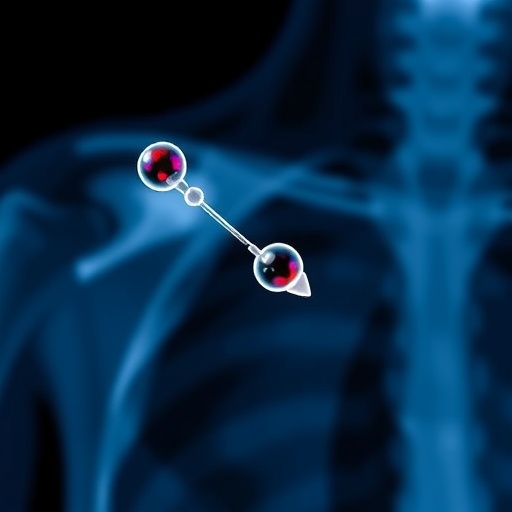In the continuously evolving field of oncological pharmacotherapy, mitigating adverse drug reactions remains a pivotal challenge. Recent research published in BMC Cancer presents compelling evidence on the effectiveness of dexamethasone, a corticosteroid extensively used to prevent hypersensitivity reactions (HSRs) during chemotherapy. The randomized controlled trial examined the non-inferiority of a lower 10 mg dose of intravenous dexamethasone compared to the conventional 20 mg dose in preventing paclitaxel-induced hypersensitivity reactions among low-risk gynecologic cancer patients. This breakthrough could have broad implications for patient care, dosing protocols, and side effect management in cancer therapeutics.
Paclitaxel, a cornerstone chemotherapeutic agent, plays a critical role in treating various gynecologic cancers. However, its administration is often accompanied by hypersensitivity reactions, which can range from mild skin rashes to severe anaphylaxis. To counter this, premedication regimens typically include dexamethasone, known for its anti-inflammatory and immunosuppressive properties. Yet, the optimal dosing of dexamethasone has remained controversial, with clinicians employing varied doses balancing efficacy against potential side effects such as hyperglycemia, immunosuppression, and mood disturbances.
The study was meticulously designed as a non-inferiority, randomized, mono-institutional trial focusing on patients naïve to paclitaxel and carboplatin chemotherapy. Initial premedication included 20 mg intravenous dexamethasone, 0.5 mg oral lorazepam, and 10 mg intravenous chlorpheniramine to establish a baseline tolerance. Patients who did not experience any hypersensitivity during the first cycle were randomized to continue with either a 20 mg or a reduced 10 mg dose of dexamethasone in subsequent cycles, maintaining the same ancillary medications. This design allowed a direct comparison of the two dosing strategies under controlled clinical conditions.
.adsslot_OsxN8wr2QB{ width:728px !important; height:90px !important; }
@media (max-width:1199px) { .adsslot_OsxN8wr2QB{ width:468px !important; height:60px !important; } }
@media (max-width:767px) { .adsslot_OsxN8wr2QB{ width:320px !important; height:50px !important; } }
ADVERTISEMENT
A total of 122 participants were enrolled and equally randomized into two arms—each consisting of 61 patients. The primary endpoint was the incidence of hypersensitivity reactions in each group. Remarkably, the incidence of hypersensitivity was 9.8% among patients receiving the 10 mg dose, compared to 13.1% in the 20 mg cohort. Importantly, the risk difference did not exceed the predetermined non-inferiority margin of 0.11, with a risk difference calculated at -0.03 and a 95% confidence interval ranging from -0.15 to 0.08. These results confirmed that the lower dexamethasone dose was not inferior to the higher dose in preventing paclitaxel hypersensitivity reactions.
From a pharmacological perspective, this finding is significant. Dexamethasone’s mechanism in suppressing HSRs involves modulation of the immune response, primarily through inhibition of cytokine release and stabilization of mast cells. The data suggest that even at the reduced dose, dexamethasone sufficiently dampens the immunologic pathways responsible for allergic reactions to paclitaxel. The implication is that patients might be spared from unnecessary corticosteroid exposure without compromising safety, thereby reducing the risk of corticosteroid-associated side effects.
The trial also underscores the importance of stratifying patients based on their risk for hypersensitivity reactions. By selecting low-risk gynecologic cancer patients who tolerated the initial dexamethasone dose well, the study delivers a more refined assessment of dexamethasone dosing efficacy, distinct from high-risk populations who might necessitate different premedication strategies. This nuanced approach enhances personalized medicine in chemotherapy administration.
Hypersensitivity reactions during paclitaxel administration have historically posed significant management challenges, leading to treatment delays or discontinuations that can adversely affect outcomes. Optimizing premedication protocols to ensure safety without sacrificing efficacy is thus a critical clinical priority. This study’s evidence that 10 mg dexamethasone is sufficient opens up potential reevaluations of existing guidelines, which often default to higher corticosteroid doses.
Beyond immediate clinical implications, the findings impact pharmacoeconomics and healthcare resource utilization. Lower doses of dexamethasone translate to reduced drug costs and minimized need for managing corticosteroid-related side effects, which can burden healthcare systems and patients. Additionally, the lower dosage aligns with patient-centered care principles, enhancing quality of life by mitigating medication-related toxicity.
Critically, the trial’s mono-institutional nature allowed consistent implementation of protocols and diligent monitoring of hypersensitivity symptoms by trained nursing staff, ensuring data fidelity. However, broader, multicentric trials might be necessary to confirm generalizability across diverse patient populations and healthcare settings. Further research may also explore the impact of dexamethasone dosing on long-term immunomodulation and cancer treatment outcomes.
It is also noteworthy that the study incorporated adjunct premedications such as lorazepam and chlorpheniramine, which have sedative and antihistamine properties respectively, potentially synergizing with dexamethasone in preventing HSRs. Dissecting the relative contributions of such combination therapies warrants additional investigation to optimize premedication cocktails.
From a mechanistic angle, the reduction in dexamethasone dose without loss of efficacy aligns with the concept of dose-response plateaus in pharmacodynamics, where beyond a certain threshold, increased drug concentration does not linearly enhance clinical effect. This invites further pharmacokinetic-pharmacodynamic studies to map the optimal dosing range and timing for dexamethasone in chemotherapy preconditioning.
Moreover, the psychological impact on patients receiving lower corticosteroid doses should also be considered. Dexamethasone can induce neuropsychiatric side effects, including mood swings, anxiety, and insomnia. Utilizing the lowest effective dose might mitigate these undesirable effects, improving overall patient experience during intensive chemotherapy cycles.
In the broader oncology landscape, these findings contribute to the trend toward de-escalation strategies, where treatments are preferrably minimized in intensity without compromising efficacy, thereby reducing toxicity. Such strategies have gained prominence in various cancer therapies, emphasizing precision and patient tolerance.
Implementing reduced dexamethasone dosing could also have ramifications for immunotherapy regimens, where corticosteroid use needs careful balancing due to potential interference with immune checkpoint inhibitors. Although this study focused on conventional chemotherapy, the principles of minimizing immunosuppressive premedications bear relevance.
This investigation represents a crucial milestone towards refining chemotherapy premedication and enhancing supportive care standards. Its implications resonate with a multidisciplinary audience encompassing oncologists, pharmacists, nursing professionals, and healthcare policymakers involved in cancer treatment protocols.
Future directions might explore whether similar dosing non-inferiority applies in other chemotherapeutic agents with known hypersensitivity risks, potentially broadening the scope of corticosteroid dose optimization. Furthermore, genetic and biomarker studies could identify patient subgroups who may benefit most from tailored premedication strategies.
Ultimately, this controlled trial advocates for a paradigm shift in managing paclitaxel hypersensitivity reactions, balancing effective prevention with minimized drug exposure. Adoption of a 10 mg dexamethasone protocol promises safer, cost-effective, and patient-centric chemotherapy care, constituting a significant advance in oncology practice.
Subject of Research: Efficacy of dexamethasone dosing for prevention of paclitaxel hypersensitivity reaction in low-risk gynecologic cancer patients
Article Title: The efficacy of premedication with 10 mg versus 20 mg of intravenous dexamethasone for prevention of paclitaxel hypersensitivity reaction in low-risk gynecologic cancer patients: a non-inferiority, randomized controlled mono-institutional trial
Article References:
Sa-ngiamphorn, N., Suprasert, P. & Charoentum, C. The efficacy of premedication with 10 mg versus 20 mg of intravenous dexamethasone for prevention of paclitaxel hypersensitivity reaction in low-risk gynecologic cancer patients: a non-inferiority, randomized controlled mono-institutional trial. BMC Cancer 25, 1324 (2025). https://doi.org/10.1186/s12885-025-14769-7
Image Credits: Scienmag.com
DOI: https://doi.org/10.1186/s12885-025-14769-7
Tags: adverse drug reactions in oncologyanti-inflammatory properties of dexamethasonechemotherapy side effect managementcorticosteroid premedicationgynecologic cancer chemotherapyimmunosuppression effects of corticosteroidsintravenous dexamethasone dosinglow-dose dexamethasonenon-inferiority trial designpaclitaxel hypersensitivity reactionspatient care in cancer therapyRandomized Controlled Trial





